COZY COPENHAGEN AND HOT HELSINKI
By Dustin O’Regan
By Dustin O’Regan
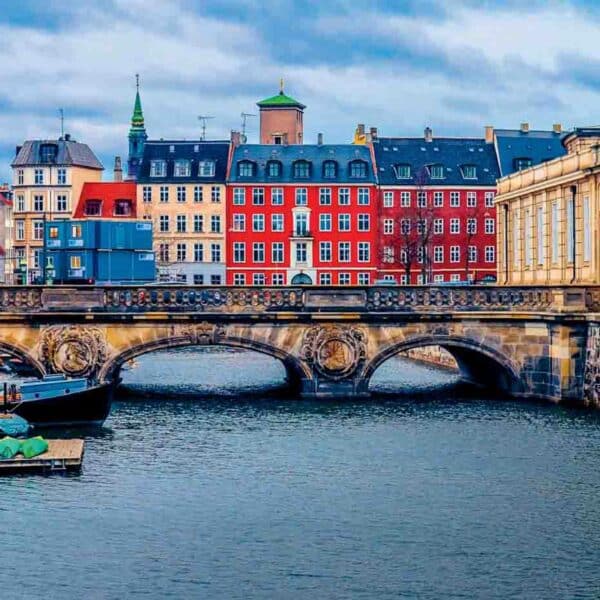
Our Scandinavian adventure began in Copenhagen, a city bursting with charm. Its winding canals, cobblestone streets, bridges, and colorful facades create a storybook setting, while its many neighborhoods each offer a distinct personality.
We made the NH Collection Copenhagen, (nh-collection.com) perched on the Inner Harbor in the Christianshavn neighborhood, our home base. Translated as “Christian’s Harbor,” this area is named after King Christian IV who created artificial islands hoping to draw Dutch merchants to Copenhagen. Today, it is an idyllic, high-end district within walking distance of almost everything.
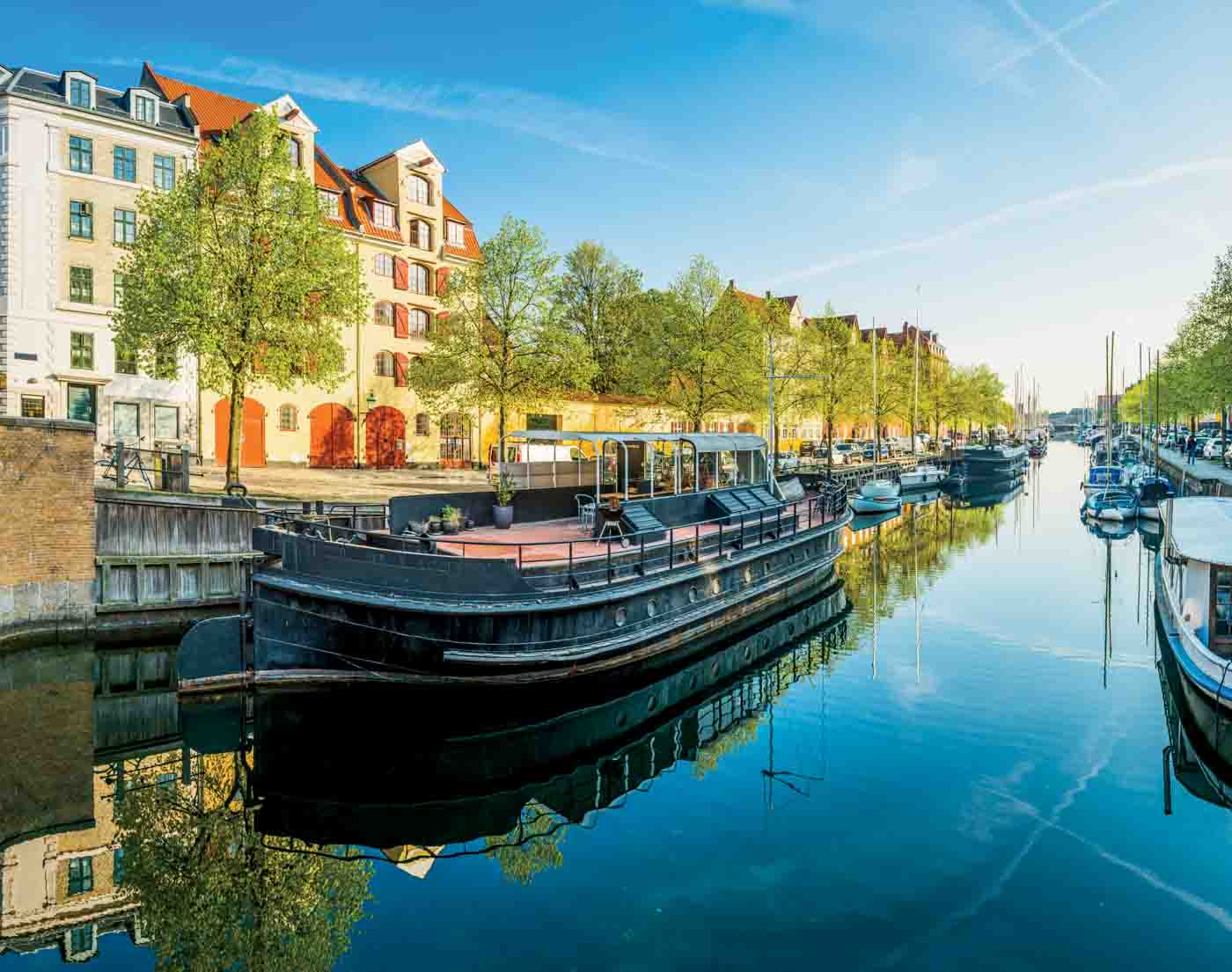
Originally built in 1957 by Danish architect Palle Suenson as the headquarters for shipyard Burmeister & Wain, the five-star NH Collection Copenhagen opened in 2021 following an extensive renovation that includes subtle maritime nods to the building’s original tenant. For example, the entryway art installation Ever Mighty—Forever Transforming is named after the last ship built at the shipyard.
Sustainability plays a key role in NH Collection Copenhagen’s operations. The hotel is committed to reducing its environmental impact, featuring a Green Sedum Roof and a Seawater Cooling System. These initiatives have earned the hotel prestigious DGNB Gold and Green Key certifications.
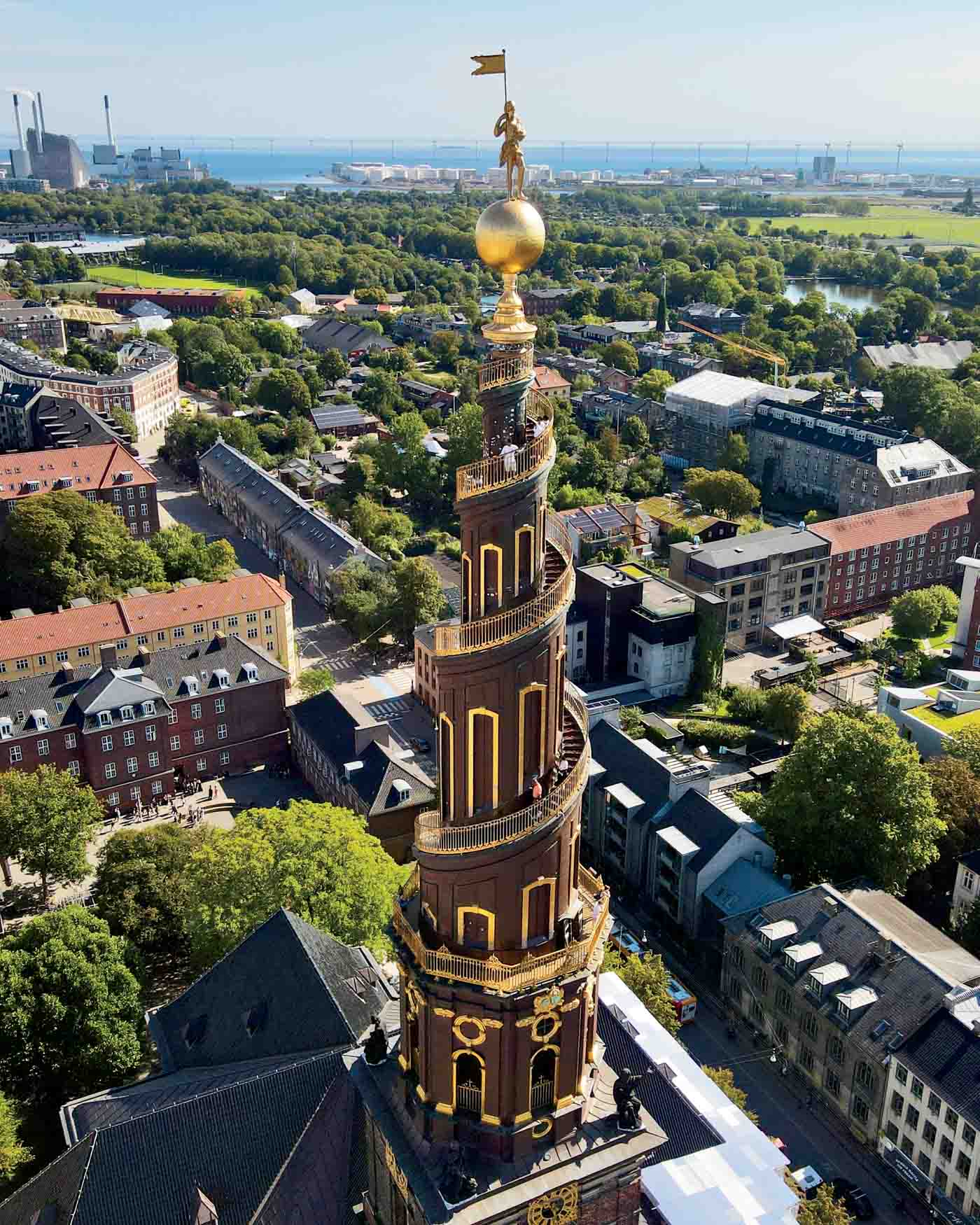
The hotel’s decor is fresh, modern, and distinctly Danish. My spacious suite featured enormous windows offering a beautiful view of the city and Christian’s Church. All guest room windows are equipped with black-out curtains to help guests adjust to the famed Scandinavian “white nights,” when sunlight lingers long into the night. In July, for instance, the sun rises around 4:30 a.m. and sets at approximately 10:00 p.m. Although this phenomenon gives you more time to enjoy the city, it would make for little sleep without the aid of said curtains.
After a blissful slumber, each morning I would enjoy a hearty Nordic-inspired breakfast at the hotel’s restaurant. I adored the traditional koldskål made with buttermilk, yogurt, mint, and lime and topped with a tiny biscuit. The attentiveness of the hotel staff was another reason for my daily return. Their every gesture reflects the hotel’s motto “Feel the extraordinary.”
After catching glimpses of dapper Danes bicycling to work— with a hat or scarf placed just so—through the restaurant’s windows, I was not surprised to learn there are more bicycles than people in Copenhagen. The city promotes cycling (imposing hefty taxes on automobiles) and has recently pledged to become the world’s first carbon-neutral capital city.
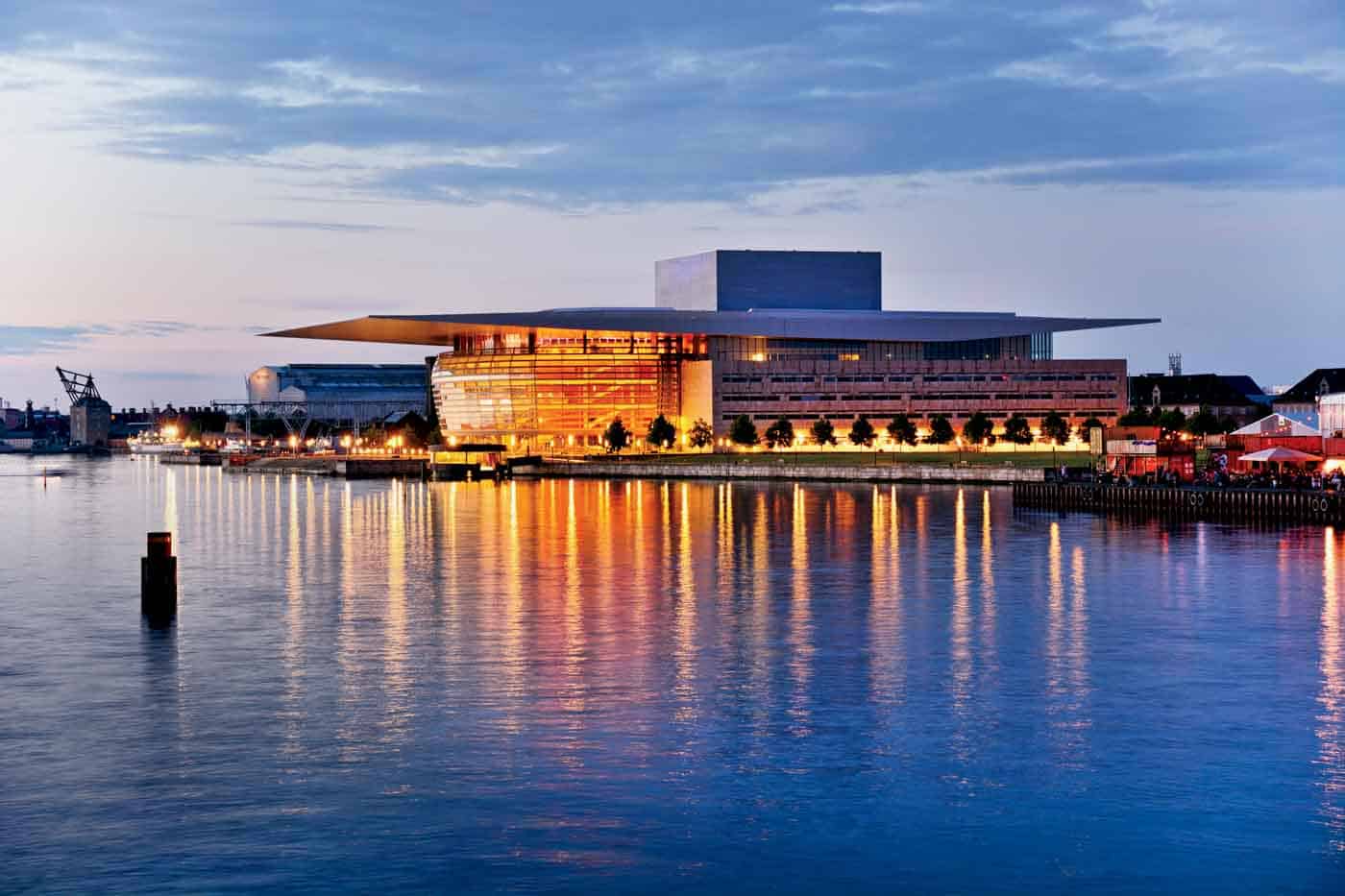
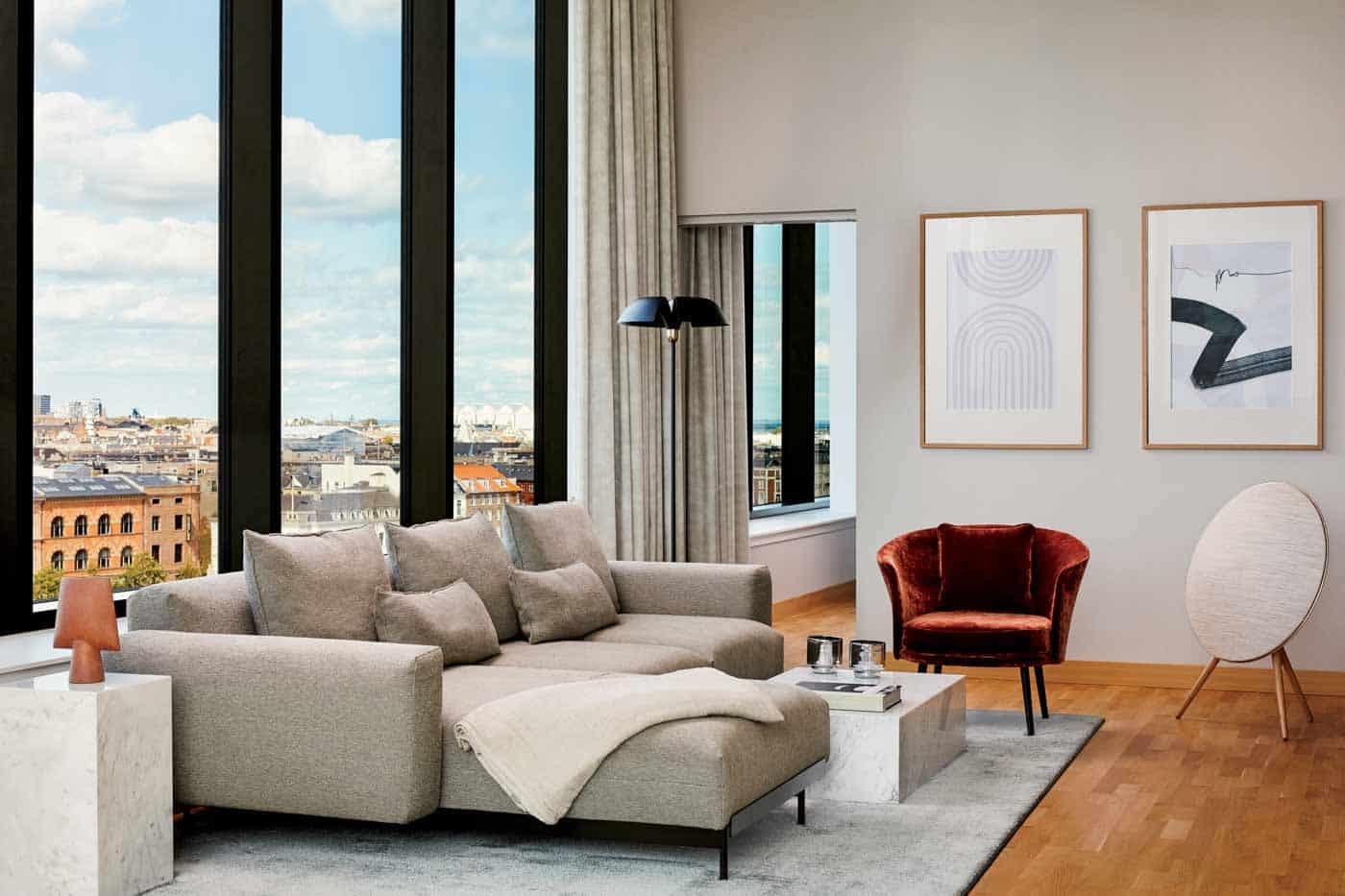
On our first day, we opted for a guided walking tour with Slow Tours Copenhagen (slowtourscopenhagen.dk), a smart choice as it gave us a deeper understanding of the city’s rich history and culture and made later navigation a cinch.
At our first stop, the Vor Frelsers Kirke, we learned a wonderful way to admire the sweeping city views is to scale the spiral outdoor staircase of the Baroque church’s gilded tower. Note that this memorable climb is not for the faint of heart.
Just beyond this magnificent church lies Freetown Christiania, a unique area that once served as an autonomous hippie commune. Founded in 1971 and long controversial for its drug trade, the district is undergoing renovations as longtime inhabitants aim to push out the “troublemakers.” The area’s fascinating history, vibrant murals, and eclectic shops make it an intriguing place to visit.
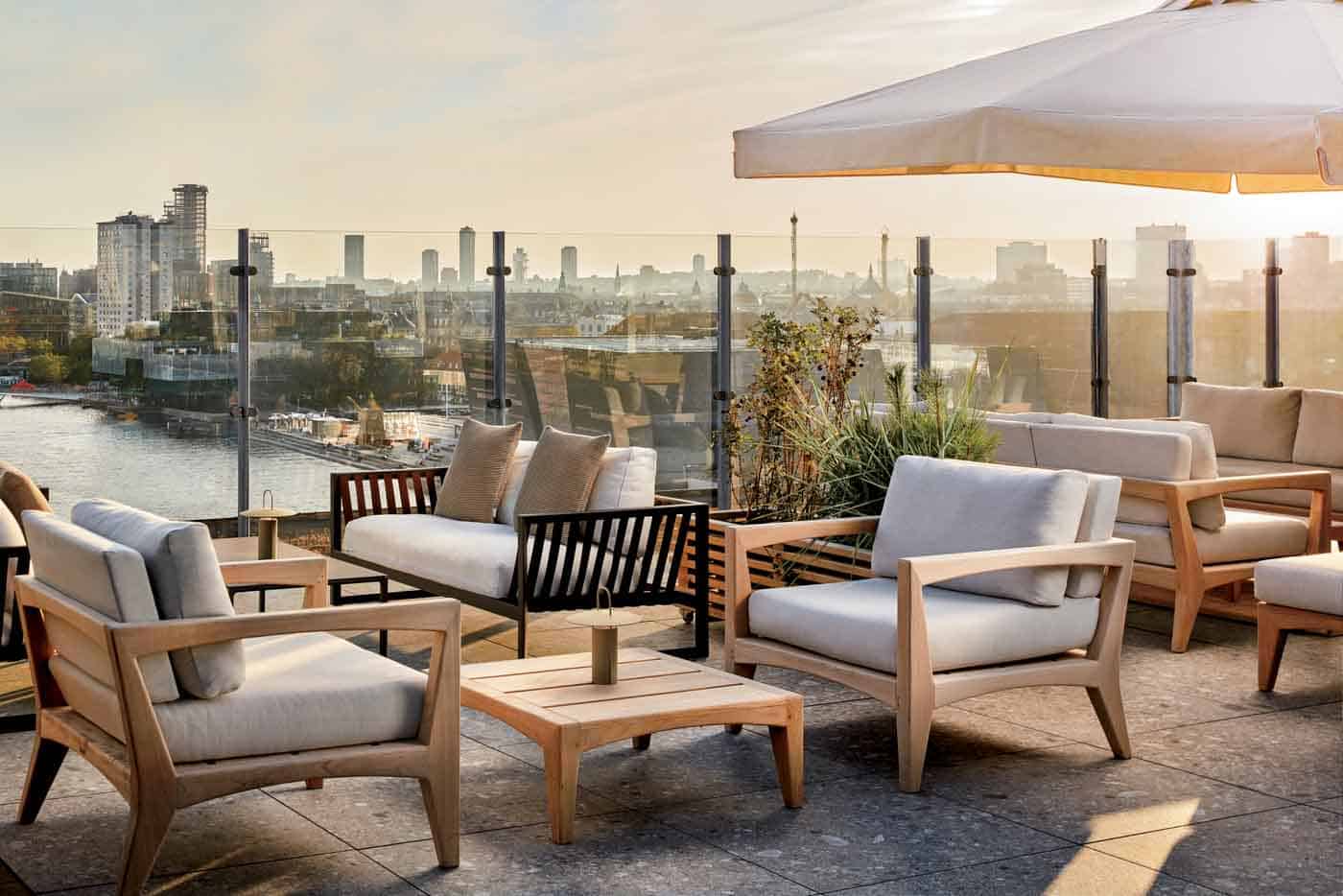
We continued our exploration north to the island of Holmen, the former grounds of the Royal Naval Base now filled with boutiques, design centers, and the new Royal Danish Opera House. This massive cultural center, funded by the owners of the shipping company Maersk, is the most expensive opera house ever built, costing over $500,000,000.
For lunch, we dined at Væksthuset in Opera Park (væksthuset.dk), enjoying traditional smørrebrød—open-faced Danish sandwiches (a staple of Scandinavian cuisine) made from sustainable, locally foraged ingredients. The restaurant’s sundrenched interior and grass-covered roof enhanced the feeling of being embraced by nature. After lunch, we took to the water, booking a canal cruise with Goboat Cruise (goboat.dk) to take in the city’s neighborhoods. Our boat tour highlighted the city’s deep connection to the sea. Copenhagen’s clean waters (the cleanest in Europe according to our guide) are perfect for swimming, but only in designated areas (visitcopenhagen.com).
Sated with sightseeing we headed to Il Bucco (ilbucco.dk) for dinner. A local favorite (opened in 2011), this eatery serves seasonally focused, Italian-inspired cuisine (made with 99 percent locally sourced ingredients) in a hip, industrial setting. My main course was a delicate ravioli in a house-made yogurt sauce, so delicious that I used the homemade bread to lap up every remaining bit. Dessert was a geranium ice cream topped with fresh berries (Denmark’s berries are otherworldly)!
The next morning, I ventured out alone to explore Slotsholmen, home to Folketing, the massive and stately Danish Parliament, and the historic Børsen, a 400-year-old stock exchange. Børsen was built in 1625 by King Christian IV. Once, this Dutch Renaissance- style building boasted red bricks, a teal green copper roof, a richly decorated interior, and a fanciful, distinctive spire formed by the intertwined tails of four dragons. For years it was said that the dragons protected Børsen from destruction. Sadly, in April 2024, an inferno engulfed large parts of the structure and toppled the spire. On that fateful spring day, even the dragons couldn’t put out the flames.
A heartwarming tale came out of the tragedy as soldiers, museum conservators, and even members of the public, ran into the burning building and climbed on each other’s shoulders to pull down artworks mounted high on the walls. This effort saved almost all the art except for a King Christian IV bust that weighed 4,000 pounds and could not be carried out. The city has promised to rebuild the beloved structure.
Crossing the street, I entered Strøget—the world’s longest pedestrian and shopping street. Running between Town Hall Square and The Kings New Square (“Kongens Nytorv”), the approximately 2-mile stretch includes a maze of small side streets and offers fabulous shopping and people-watching.
I then rejoined my friends at the Designmuseum Denmark (designmuseum.dk). This shrine to Danish design is located in a beautiful building originally built as the city’s first public hospital. The museum’s four wings house an extensive collection showcasing Danish textiles and fashion and furniture pieces from iconic Danish designers like Arne Jacobsen and Kaare Klint. I highly recommend getting the Copenhagen Card (copenhagencard.com), which offers free access to Designmuseum Denmark, other museums, and public transportation.
With our cultural curiosity satisfied for the day, we rode the incredibly clean subway to Tivoli (tivoli.dk), Copenhagen’s famous amusement park, which opened in 1843 and offered the inspiration for Walt Disney’s Disneyland. Tivoli isn’t your typical amusement park—you’ll find Michelin-starred restaurant pop-ups, one of Copenhagen’s priciest hotels (the Nimb Hotel, a stunning example of Moorish architecture), performances from the New York City Ballet and stars like Diana Ross, and a charming lake for boating. After hearing Denmark’s 84-year-old Queen Margrethe had recently ridden the park’s most popular attraction, “The Roller Coaster,” I had to try it myself. Built in 1914, it’s one of the world’s oldest wooden roller coasters and was indeed a thrilling ride. A huge fan of Tivoli, the Queen spends most of her time here working with the ballet on costumes and set design.
For lunch, we opted for Tivoli’s charming Kilden (kildenihaven. dk), a cozy restaurant with long wooden tables in a lush garden setting. I indulged in more smørrebrød—one a combination of potato and herbs and the other a delight of smoked salmon on herbed cream cheese crowned with a mountain of dill. It was gastronomy at its finest, a far cry from the Six Flags’ funnel cake.
That evening we dined at Meyers i Tårnet (meyers.dk), which is perched within a tower of the Danish Parliament building. The expansive city views coupled with a menu of seasonal ingredients and an impressive wine and cocktail list, made for an unforgettable dining experience. Since the restaurant sits in a government building, all guests must pass through security so be sure to allow extra time before your reservation.
On our last day in Copenhagen, we visited the iconic Little Mermaid statue. We began with a stroll through the picturesque Nyhavn (translated as “New Harbor” even though it was built more than three centuries ago). Lined with colorful townhouses and historic yachts moored in the canal, it is the city’s most touristy area and you might recognize Nyhavn as its image is universally found on Danish postcards. Along the way, don’t miss Frederik’s Church, also known as the Marble Church. Modeled after St. Peter’s Basilica in Rome, its stunning Rococo architecture and grand dome dominate the Frederiksstaden neighborhood skyline. Nearby is the royal family’s winter residence, Amalienborg Palace, a collection of four Rococo buildings symmetrically arranged around an octagonal courtyard, with a statue of King Frederik V on horseback at its center. Continuing through a lovely park and passing the beautiful Gefion Fountain depicting a Norse goddess, you’ll arrive at Copenhagen’s most famous symbol—the small bronze statue of the Little Mermaid, perched on a rock at the water’s edge at Langelinie Pier. The statue was inspired by Hans Christian Andersen’s beloved fairy tale and pays tribute to the city’s most cherished storyteller.
On our final night, we headed up to NH Collection Copenhagen’s rooftop eatery/bar, ROOF (roofcph.com). Our eyes were the first to feast as we admired the breathtaking views of Copenhagen’s copper roofs, waterways, and many spires. Once seated, we savored an assortment of seductive cocktails and exquisite dishes crafted by the hotel’s talented chefs.
Danish culture is centered around the concept of hygge—a feeling of cozy contentment and well-being—which we experienced throughout our stay. With hearts full, we bid farewell to our beautiful hotel and to Copenhagen, one of the cleanest and safest capitals in the world, as we set off for Finland, Denmark’s Nordic neighbor.
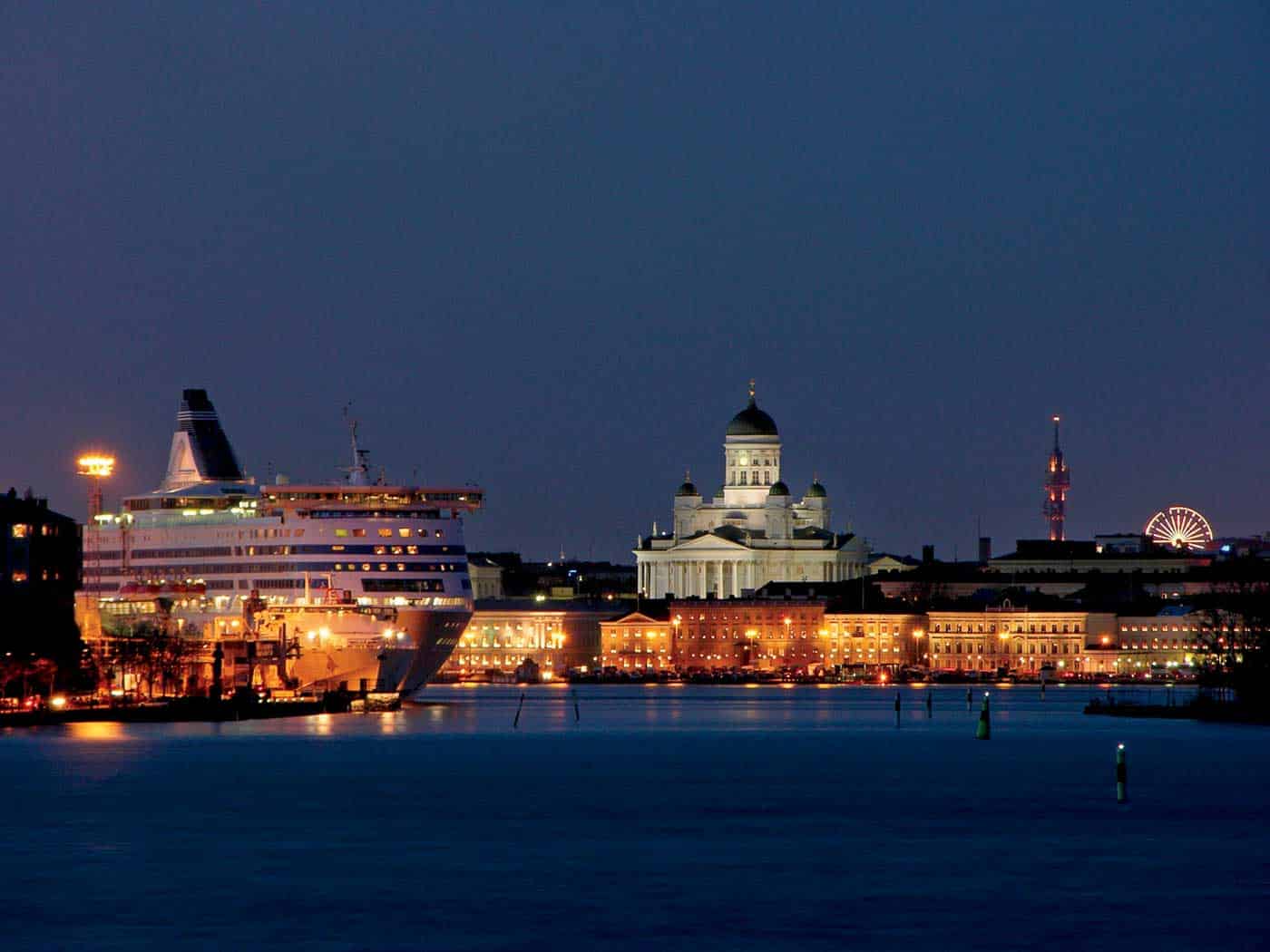
HELSINKI
After a smooth flight to Helsinki, the drive to our hotel offered a delightful introduction to the EU’s youngest capital, showcasing its Neoclassical and Art Nouveau architecture. Helsinki features a bustling harbor front, a grand main boulevard, towering cathedrals (en route to the hotel you’ll pass the massive Uspenski Cathedral), a myriad of islands, and a vibrant design scene.
When I began writing about this city, the first phrase that popped into my head was “Helsinki is hot.” After all sauna, pronounced “sownah,” is a Finnish word. Saunas are ingrained in Finnish culture; the first written record of the Finnish sauna dates to 1112, making it a way of life for more than 2,000 years and there are as many saunas in Finland as there are people. The Helsinki Ferris wheel, known as the SkyWheel, even comes complete with a sauna cabin, the only one of its kind in existence. In sum, the Finns love heat!
Finns are incredibly friendly and love coffee, consuming more coffee per capita than any other nation, averaging five cups a day. Perhaps this helps them adjust to the long days of the aforementioned Scandinavian “white nights.” Helsinki is home to countless charming coffee shops, and I highly recommend Kaffa Roastery.
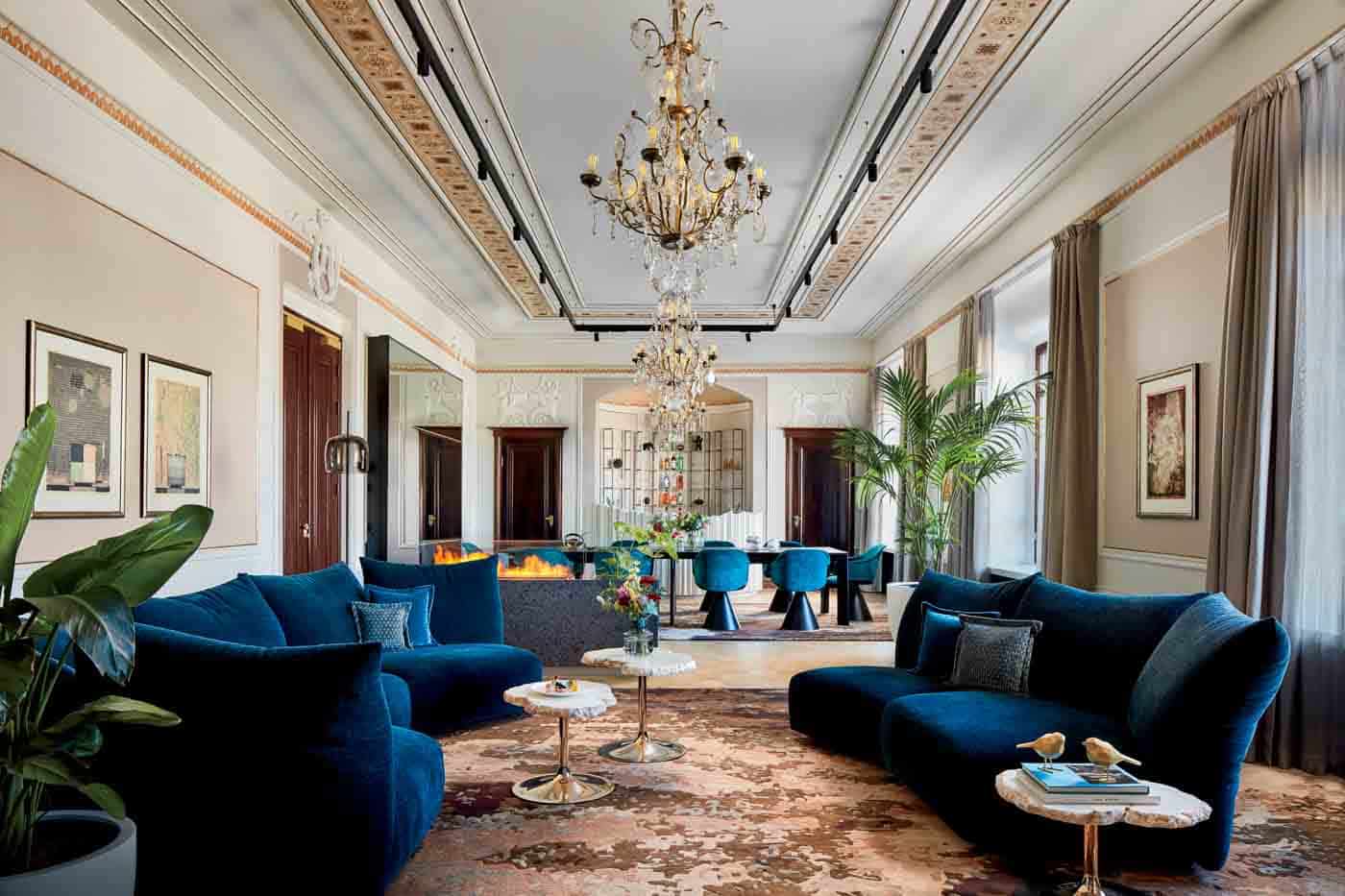
We stayed at the NH Collection Helsinki Grand Hansa (nh-hotels.com), a perfectly located, historically significant hotel that merges two iconic Art Nouveau-style properties: the New Student House, built in 1910, and Seurahuone, Helsinki’s oldest continuously operating hotel. Over a 100-year history, the buildings have hosted countless dignitaries, from presidents to grand dukes.
The New Student House was designed by Armas Lindgren and Wivi Lönn, Finland’s most prominent female architect, while Seurahuone is considered one of Lindgren’s greatest works. The Seurahuone building’s grand exterior is crowned by enormous soapstone sculptures by Johannes Haapasalo.
Inside the hotel, you are greeted by a rich heritage burnished by modern hospitality. Original architecture and finishes coexist with sleek, contemporary touches like the stunning lobby bar, metal- clad reception pods, and a decorative glass wedge wall. Finnish contemporary art by artists such as Tapani Mikkonen and Kristian Krokfors adorns the rooms and public spaces. My suite was the perfect blend of old and new, featuring an Art Nouveau glass shower, a small balcony overlooking the promenade, and modern furniture by noted interior designer Carola Rytsölä crafted in local workshops.
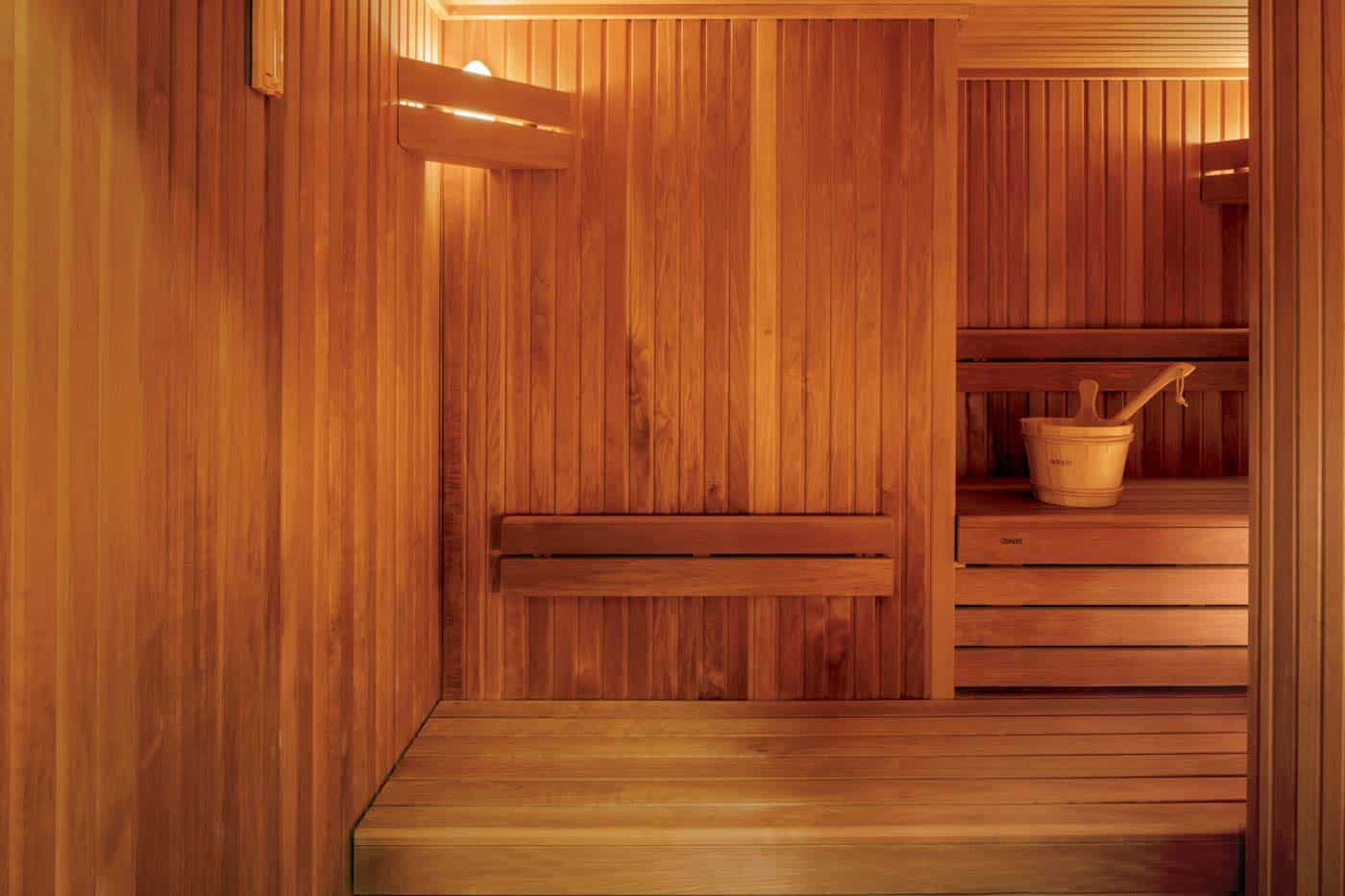
The hotel’s Hansa Café Bar & Brasserie takes guests on a culinary journey, blending classic French cuisine with sustainably sourced local ingredients (hansacafehelsinki.com). For cocktails, the Kupoli bar, located in the historic dome-shaped tower, offers 360-degree views of the city (kupolibar.com/en). Here you will find meticulously curated cocktails that take libations to new “heights.” The USVA spa, inspired by the ethereal mist that drifts over Finnish lakes, offers a modern wellness experience rooted in ancient Finnish traditions. It includes a Finnish sauna, steam sauna, infrared sauna, and a serene relaxation room. We enjoyed a multi-sensory wellness experience, complete with a foot bath, face mask, and salt scrub in the steam room—deeply therapeutic. Adjacent to the spa, you will find an enormous gym—with every machine imaginable.
On our first night, we had an elegant dinner in the hotel’s Presidential Suite—a spacious, 646-square-foot apartment fit for royalty. We dined on fresh fish, foraged vegetables, and local wines, with a view of the Helsinki Central Railway Station, regarded as one of the world’s most beautiful train stations. Designed by Eliel Saarinen in 1919, the station’s entrance is flanked by colossal male sculptures, and its soaring clock tower is a marvel of ornate glass and metalwork.
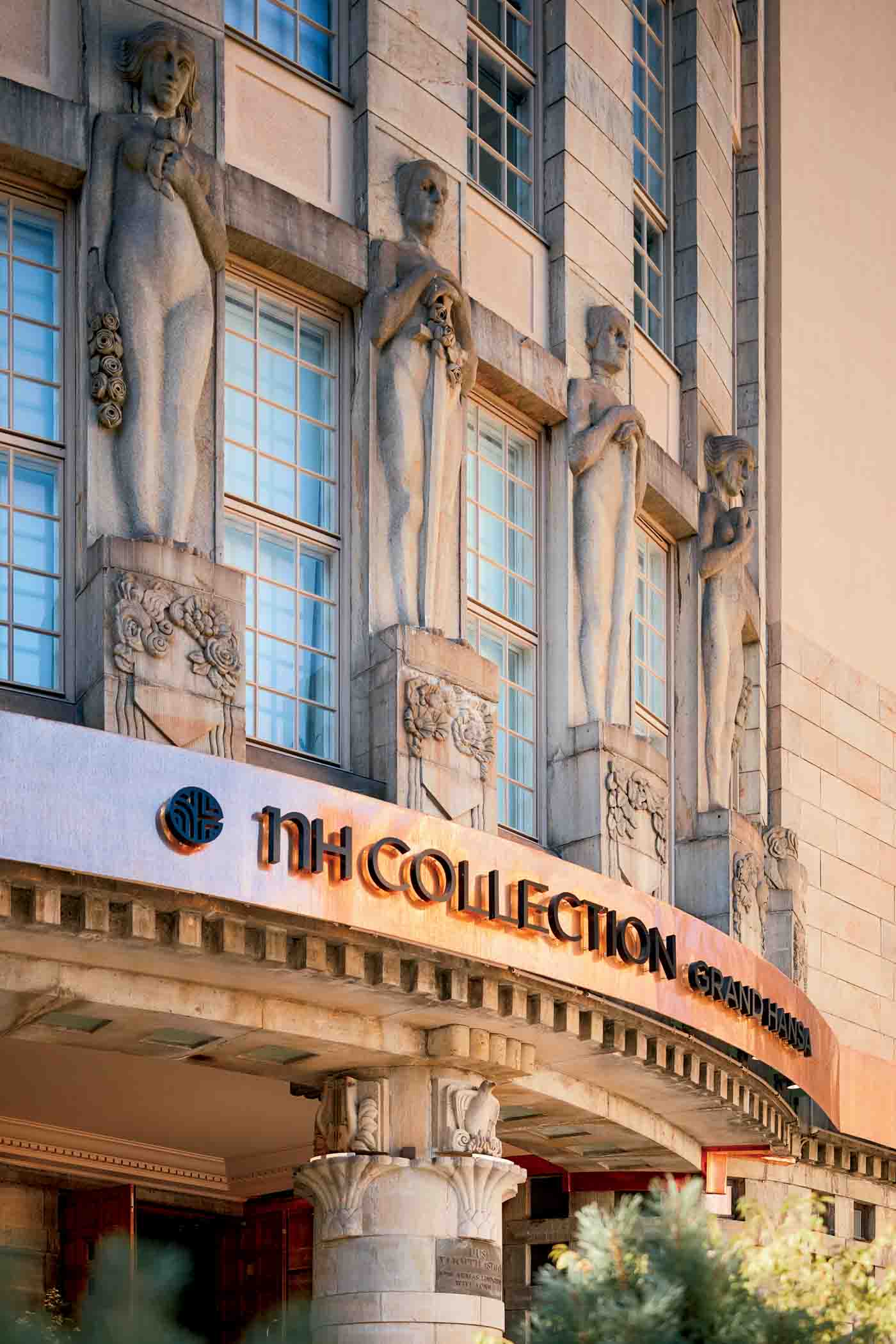
The next morning, we dove into Helsinki’s famed Design District, full of hip furniture stores (Artek), design studios (Studio Sarpaneva), art galleries (Lokal Gallery), and museums (Designmuseo). Many of these facades feature Art Nouveau architecture, making the exteriors as captivating as the treasures you’ll find inside. After satisfying our design cravings, we strolled to Kaivopuisto Park and visited the charming former home of actress Ida Aalberg, now Restaurant Elm, known for its zero-waste philosophy and delicious sustainable fare.
In the evening, we wandered through Market Square or Kauppatori, browsed its vibrant fruit stalls, and took a ferry to Lonna Island to experience Lonna Sauna (lonna.fi). The public, wood-fired saunas offer spectacular views of the Baltic Sea and neighboring islands. Like the locals, we alternated between the intense heat of the sauna and a refreshing dip in the icy sea. Our meal at the Lonna Restaurant, featuring fresh, locally sourced ingredients, was equally unforgettable.
On our last day, we embraced Finland’s love of foraging at the Seurasaari Open-Air Museum, where we gathered wild herbs in a forest surrounded by the Baltic Sea (foraginginfinland.com). Our guide introduced us to the benefits of various plants like stinging nettle (an aphrodisiac) and creeping Charlie (rich in vitamin C). Afterward, on a rocky outcrop overlooking the sea, we enjoyed a traditional Finnish picnic of new potatoes, salmon, herbed butter, and blueberry pie, prepared by Chef Filip Forsberg of the Hansa Café Bar & Brasserie.
For our final dinner, we dined at Savoy (savoyhelsinki.fi), one of Helsinki’s most prestigious restaurants, designed by the famous architects Aino and Alvar Aalto. Our meal, a blend of Finnish and French flavors with a Russian twist, was enjoyed on the top floor’s glass balcony with a stunning view of the city. We capped off the evening with a stroll through the lively Esplanade Park, reminiscing about our wonderful trip to this energetic city.
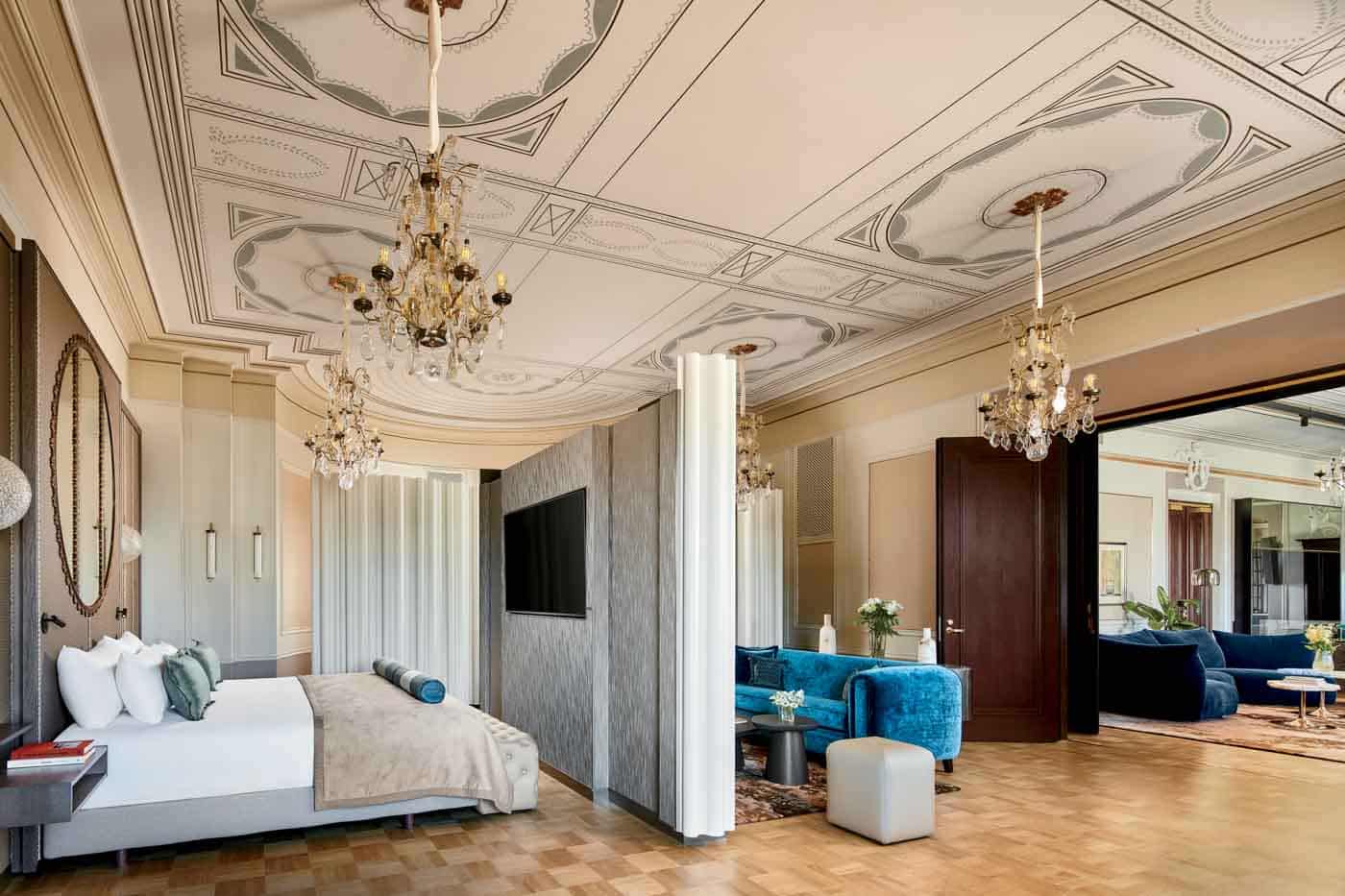
Helsinki, with its friendly people, vibrant culture, beautiful design, and fresh food, deserves its accolades as one of the happiest cities on earth. Whether you’re soaking in the city’s rich history, indulging in its exquisite cuisine, sweating in its saunas, or simply enjoying a cup of coffee in a charming café, Helsinki offers a memorable experience. Don’t forget to pick up a Moomin mug or two for loved ones back home. Kippis!
Craving a European getaway to two Norse capitals rich in culture and brimming with warmth? This itinerary is sure to delight every traveler.
Sign Up for the JWC Media Email